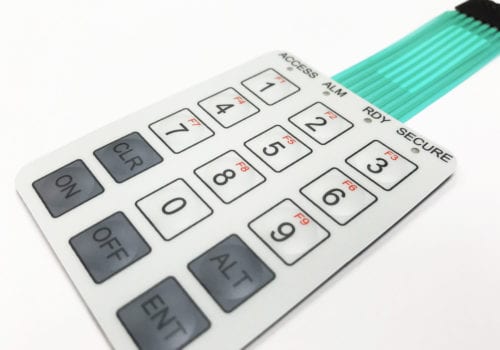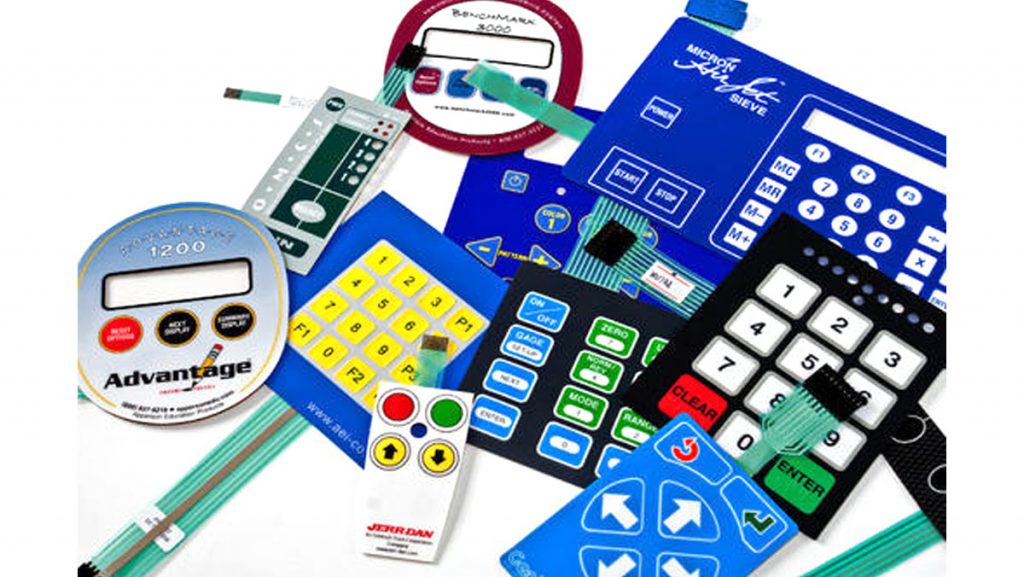Custom Membrane Switches for Specialized Applications: A Deep Dive
Custom Membrane Switches for Specialized Applications: A Deep Dive
Blog Article
Comprehending the Significance of Membrane Switches in Customer Interfaces
Membrane switches are important parts in the design of effective individual interfaces, promoting not just functionality but likewise boosting aesthetic charm and customer communication. As we explore the future patterns and different benefits associated with Membrane innovation, it ends up being clear that these buttons are a lot more than simply parts; they stand for a merging of technology and usefulness.
What Are Membrane Switches?
The spacer layer, which has glue buildings, permits the splitting up of the circuit layer from the overlay, guaranteeing that the switch remains in a non-activated state till pushed. When pressure is related to the overlay, it compresses the spacer layer, bridging the void and finishing the circuit in the underlying layer. This style not only lowers the physical room required for traditional mechanical buttons however additionally improves the sturdiness of the device, as Membrane switches are generally immune to dust, dampness, and various other environmental factors.
Frequently located in applications ranging from consumer electronic devices to medical tools, Membrane switches are important to modern technology, providing a user-friendly and reliable interface that straightens with modern design demands.
Advantages of Membrane Buttons
While many button innovations exist, Membrane Switches deal distinctive benefits that make them especially preferable in various applications. Among the primary benefits of Membrane switches is their small layout, which enables space-saving applications in tools where realty is restricted. Their slim profile not only boosts aesthetic charm yet also assists in lightweight building.
An additional significant advantage is their resistance to ecological factors. Membrane switches are commonly sealed against wetness, dirt, and contaminants, making them optimal for usage popular environments, such as medical gadgets and commercial tools. This resilience expands the life expectancy of the button, reducing maintenance expenses and improving integrity.
In addition, Membrane buttons can be personalized to satisfy particular layout needs, incorporating distinct graphics and colors that improve individual interaction. Their tactile comments choices can also be tailored to offer a rewarding individual experience. Furthermore, Membrane switches are cost-effective, particularly in high-volume applications, as they can be produced efficiently.
Applications in Different Industries

In the consumer electronics industry, Membrane buttons prevail in devices such as microwaves, cleaning devices, and remotes. Their tactile feedback and visual options boost individual experience while providing a sleek, contemporary appearance. Furthermore, automobile producers use Membrane buttons in dashboard controls and infomercial systems, where area is limited, and individual interaction is essential.
Additionally, the commercial industry leverages Membrane switches in control panels for equipment and equipment, enabling for intuitive operation in typically extreme atmospheres. Their resistance to chemicals and wetness makes sure durability and integrity in these applications. On the whole, the versatility of Membrane Switches contributes dramatically to their widespread use, making them indispensable in different technical domain names.
Design Factors To Consider for Membrane Switches

When designing Membrane switches, a number of vital factors to consider must be taken into account to make sure optimum capability and user experience. The selection of materials is crucial; choosing long lasting, premium substratums can improve the switch's durability and resistance to environmental elements such as moisture and temperature see this website level fluctuations.
Secondly, the layout of the visuals overlay need to focus on clearness and simplicity of use. Icons and message have to be legible, and the layout should facilitate intuitive communication (membrane switches). Furthermore, tactile feedback is essential; including a responsive dome or other mechanisms can boost the customer experience by providing physical verification of activation
An additional essential element is the button's electrical performance. Designers have to make sure that the conductive traces are appropriately designed to decrease resistance and prevent signal disturbance. This entails analyzing the needed actuation force and ensuring compatibility with the digital components they will certainly interface with.

Future Fads in Membrane Innovation
As modern technology continues to breakthrough, Membrane buttons are poised to progress considerably, driven by technologies in materials and producing techniques. One emerging fad is the incorporation of sophisticated materials, such as adaptable substrates and conductive inks, which improve longevity and decrease the total weight of Membrane switches. These materials not just boost the tactile action yet also permit the style of switches that can hold check here up against harsher environmental conditions.
Moreover, the assimilation of touch-sensitive technologies is transforming standard Membrane Switches into more interactive individual interfaces. Capacitive touch sensing units installed within Membrane button panels can give a more user-friendly and receptive customer experience, straightening with the expanding need for sleek, modern styles in consumer electronics.
Furthermore, innovations in printing techniques, such as digital and 3D printing, enable rapid prototyping and customization of Membrane switches. This flexibility allows manufacturers to respond quicker to market demands and consumer preferences.
Lastly, sustainability is ending up being a considerable focus, with makers checking out green products and processes. As these fads unravel, the future of Membrane innovation guarantees boosted have a peek at this site capability, aesthetic allure, and environmental duty, solidifying their function in sophisticated individual interfaces across various sectors.
Verdict
To conclude, Membrane Switches stand for a crucial part in the layout of interface, integrating functionality with visual versatility. Their advantages, consisting of durability and resistance to ecological aspects, make them suitable for varied applications throughout various sectors. Moreover, thoughtful design factors to consider boost user communication and experience. As improvements in technology proceed, the development of Membrane switches is anticipated to additional refine user interfaces, driving technology and enhancing usability in a progressively complex technical landscape.
Membrane switches are indispensable elements in the design of reliable user interfaces, helping with not just functionality but likewise improving visual appeal and user interaction.Membrane Switches offer as a vital part in different individual interfaces, promoting a smooth interaction between individuals and digital tools.While countless switch technologies exist, Membrane Switches offer unique benefits that make them specifically desirable in different applications.In addition, Membrane buttons can be tailored to meet specific design requirements, integrating special graphics and shades that improve individual communication.In final thought, Membrane Switches represent an essential component in the design of user interfaces, combining functionality with aesthetic flexibility.
Report this page